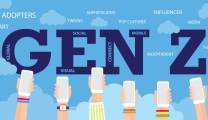Why is diversity sourcing important?
Diversity sourcing is crucial in building an inclusive workforce that promotes creativity, innovation, and success.
Companies that fail to embrace it risk losing out on valuable opportunities.
Diverse teams bring together unique perspectives, experiences, and skill sets that complement each other, leading to better problem-solving and decision-making.
But diversity sourcing isn’t just about ticking off a box on your DE&I checklist. It’s about actively seeking out and hiring candidates from underrepresented backgrounds who may have been overlooked in traditional recruitment processes.
By doing so, organizations can expand their talent pool, enhance their employer brand, and improve employee engagement and retention.
7 powerful diversity sourcing strategies you need to follow
1. Leverage social media
Social media is a powerful tool for sourcing candidates from underrepresented groups.
Start by using hashtags that are popular among diverse communities, such as #BlackTechTwitter, #LatinxTech, or #QueerInTech.
You can also join slack communities or social media groups on Instagram, LinkedIn, and Facebook that cater to a variety of professionals and job seekers for open roles.
By engaging with these groups, you can build relationships with potential candidates and create a more inclusive talent pool.

2. Attend DE&I events
Attending diversity, equity, and inclusion events, such as job fairs, conferences, or networking events, is another great way to source diverse candidates.
These events are designed to bring together people from different genders, people with disabilities, and diverse groups with different sexual orientations.
Use them to showcase your company’s initiatives to craft a diverse workforce and meet potential candidates face-to-face.
Prepare a clear message about your company’s workplace values and culture and be open to learning about candidates’ experiences and perspectives.
3. Build relationships with diversity-focused organizations
There are many organizations that focus on promoting diversity and inclusion in specific industries or communities.
By building relationships with these companies, you can tap into their talent pipeline and gain access to exclusive job boards or talent pools.
You could also look for employee resource groups to increase chances of outreach and build an inclusive recruiting process to hire diverse talent.
4. Implement blind hiring practices
Blind hiring practices involve removing identifying information, such as name, gender, or race, from resumes or job applications.
This helps to mitigate bias and ensure that the qualified candidates are evaluated solely based on their skills and qualifications.
You can also use an applicant tracking system like Recruit CRM that’s EEO compliant and helps sort job postings and mitigate unconscious bias.
5. Use language effectively in recruitment and hiring
Start by using inclusive DE&I language in your job descriptions and recruitment materials.
It is also important to avoid using any language in JDs that can be discriminatory or exclusionary, such as terms that imply a preference for a certain race, gender or age group.
Such talent acquisition practices are detrimental to building an inclusive hiring strategy.

6. Look beyond the resume
A traditional CV may not always be the best indicator of a candidate’s skills and abilities.
Expand your talent pool by considering alternative achievements like certifications, internships, or apprenticeships.
Look beyond the resume and consider using skills tests, video interviews, or work samples to assess candidates.
This hiring strategy and subsequent interview process can help you reduce bias and find the top candidates for the open role.
7. Train your hiring team on diversity and inclusion
Finally, it’s crucial to train your recruiting team on the best diversity and inclusion practices. This includes educating them on the importance of identifying and mitigating bias and creating an inclusive candidate experience.
Also, don’t forget to provide handsome incentives to your team when they provide referrals.
With these in practice, you’ll be able to improve your diversity metrics in no time!












Replies to This Discussion